Getting enough iron is a health concern that many women have, but it’s also one that men may also have too.
Depending on dietary choices, activities, hormones, and overall health, a person’s iron levels can vary during the course of their lives for many reasons.
Not Sure How Iron Works in the Body? Here’s a Little Rundown…
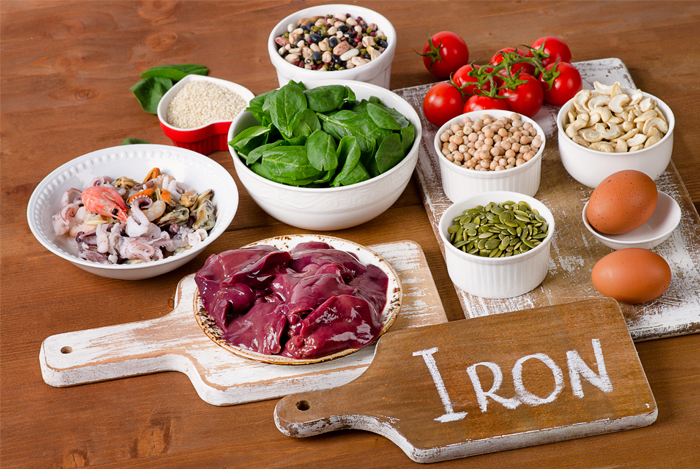
Iron is an essential part of hemoglobin which makes up red blood cell tissues.
Like all minerals, you need iron for optimal health, but you should be careful about where you get your daily iron from and how much you consume.
Iron delivers oxygen to the cells which propel energy throughout the body, ensures optimal blood flow, and it can even stimulate better mental focus. Iron is also especially important for athletes since it delivers necessary oxygen to the muscles to fuel grueling workouts or even just general activity.
Iron even supports metabolic function because it makes up the protein in the body known as myoglobin. This protein provides oxygen to the muscle tissues helping to boost energy and aid in proper growth and repair of the body’s muscles and connective tissues.
The bottom line is that without iron, you simply cannot function at optimal levels. Anemia is not the only condition associated with low iron levels. Mental fogginess, depression, and even injury can all be associated with too little iron in your diet. However, popping an iron supplement or eating several steaks a week to get enough iron aren’t the best options for your health.
The Problem With Iron Supplements and Eating Red Meat to Get Enough Iron Through Your Diet…
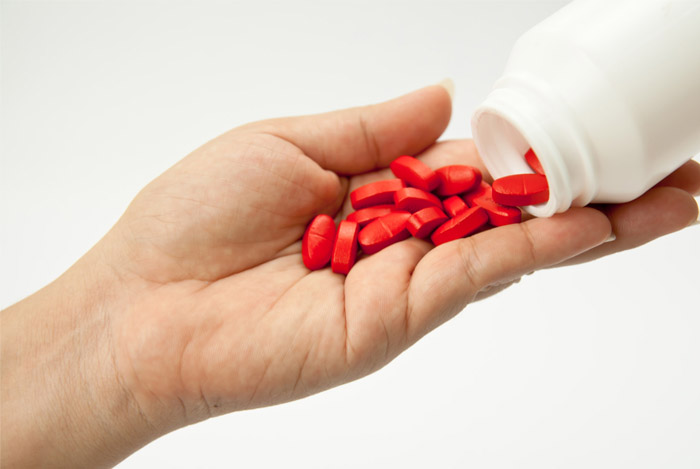
Many iron supplements can contain heavy metals because they’re made from synthetic iron; these supplements can also lead to constipation, heavy metal toxicity, inflammation, and they can worsen brain disorders or even increase your risks for Alzheimer’s disease.
Iron is also one of the only minerals that accumulates in the body, so you don’t excrete every form of iron you take in, especially when you get your iron from heme (animal-based) sources and synthetic sources of iron, such as supplements.
However, your body uses non-heme iron from plants much differently; it uses what iron it needs and the rest can be excreted since it is not stored in the body.
This doesn’t mean you need to avoid all animal protein sources, but you should stay away from red meat for optimal safety regarding iron intake since it is more concentrated and strongly linked to Alzheimer’s disease, not to mention the risk of heart disease and many other health issues.
So how are you supposed to get enough iron without eating red meat or taking iron supplements? It’s actually easier than you think when you add the following iron-rich foods and tips to boost your iron levels into your routine!
10 Iron-Rich Foods to Eat Instead of Red Meat:
1. Hemp Seeds
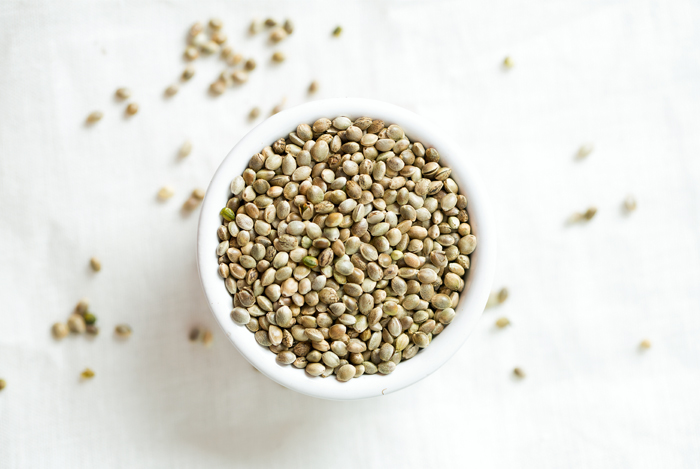
Hemp seeds are a great source of iron and one of the most overlooked sources, containing 16% of your daily needs in just 3 tablespoons!
They’re also rich in protein, omega-3 fatty acids, Vitamin E, chlorophyll, magnesium, zinc, and potassium. Hemp protein powder is even higher in iron since it’s more concentrated containing up to 30% of your daily iron needs per serving depending on the brand and variety of hemp protein that you choose.
Hemp seeds or hemp protein are a great way to add more plant-based iron to your diet. Since it’s a complete source of protein, hemp is also a great protein option for vegans, vegetarians, or anyone looking to add more easy-to-digest plant-based protein to their plates.
Add some hemp seeds to your smoothies, oatmeal, salads, entrées, or you can even bake with them if you like too! Hemp has a nutty, earthy flavor and is easy to enjoy in a variety of ways.
2. Oats
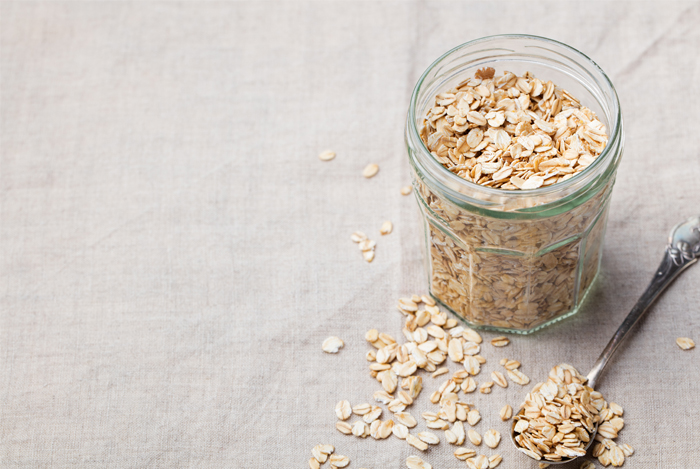
One of the most well-loved grains is also a great source of iron, believe it or not. Plain oats contain 10-15% of your daily iron needs per ⅓ cup serving depending on the brand and variety of oats that you choose.
If you buy plain, fortified oatmeal, you can easily obtain over 50% of your daily iron needs by just opening up a packet and calling it a day, although fortified foods should be a last resort since they’re more processed.
Choose from steel-cut, rolled, quick-cook steel cut, or even quick oats and make them a part of your daily routine. However, you may want to give your oats a soak overnight before you consume them since natural compounds known as phytates that are found in all grains, beans, seeds, and nuts can lead to the prevention of iron absorption.
Oats are also a great source of protein, fiber, calcium, magnesium, potassium, and important types of nutrients that do everything from improve your skin, protect your heart, and they can even help you lose weight while packing on lean muscle. See more reasons to add oats to your diet here if you’re still on the fence!
3. Tahini
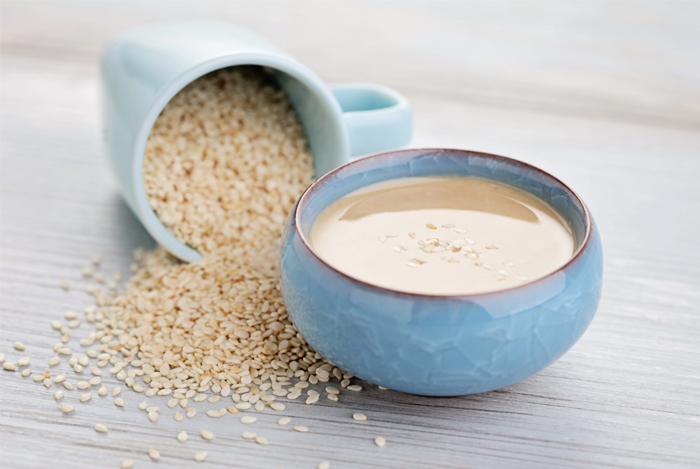
Tahini, also known as sesame seed butter, is a great source of iron that’s delicious and easy to add to your plate.
It contains 15% of your daily iron needs per two tablespoons which is easy enough to add to your day either as a dressing, dip, spread, or as an ingredient in your smoothie or porridge. Tahini is savory, slightly nutty, and makes for a great ingredient to include in your salad dressings or as a replacement for peanut butter. It’s also low in carbs, high in protein, and is a good source of monounsaturated fats.
4. Chia Seeds
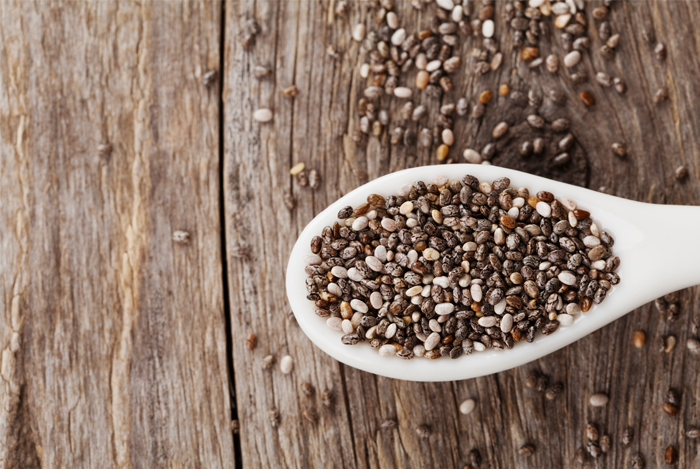
Chia seeds are well-known for their nutritional benefits, but most people aren’t even aware that they’re also a rich source of dietary iron and a complete source of protein too. Chia seeds provide around 2.2 milligrams of iron per two tablespoons which is about 12% of your daily iron needs.
Chia is also a great source of other minerals such as magnesium, potassium, and zinc so they’re a wonderful mineral-rich food to add to your plate for complete nutritional benefits.
5. Leafy Greens (Spinach and Kale)
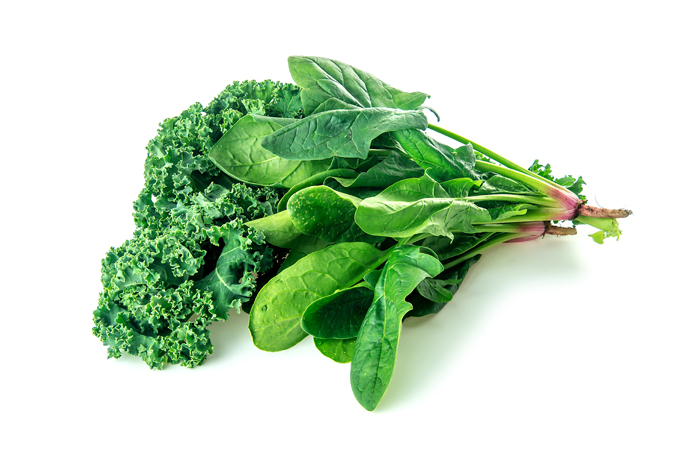 Three cups of boiled spinach provide around 17% of your daily iron needs which is more iron than what’s found in chicken, turkey, and most forms of beef. Raw spinach is also a good source of iron but cooking spinach does improve overall iron absorption, so be sure to keep that in mind when counting your total sources.
Three cups of boiled spinach provide around 17% of your daily iron needs which is more iron than what’s found in chicken, turkey, and most forms of beef. Raw spinach is also a good source of iron but cooking spinach does improve overall iron absorption, so be sure to keep that in mind when counting your total sources.
Cooked kale and raw kale are also good sources of iron although they are not as rich as spinach. Other greens such as watercress, romaine, dark lettuces, dandelion greens, and many other greens contain smaller contents of iron as well.
Eat a variety of leafy greens per day for optimal benefits, and be sure you include some spinach a few times a week in your diet; it’s also a great source of magnesium, folate, protein, and Vitamin A, E, and C making it a nutrient-dense green you don’t want to leave out of your diet.
6. White Beans (Cannellini or Navy Beans)
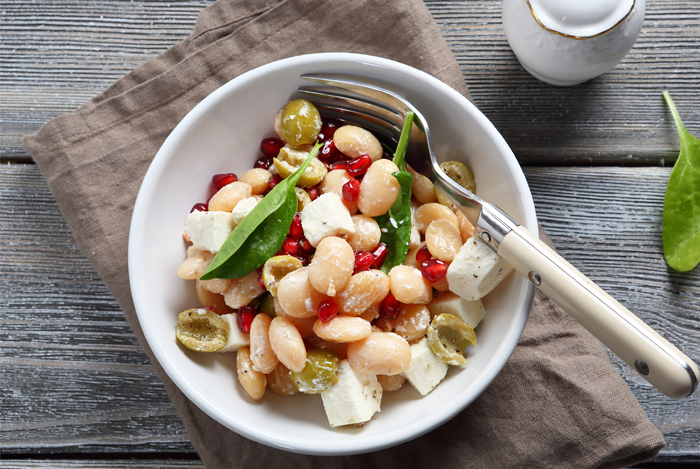
Beans are high in protein, calcium, magnesium, potassium, and iron too. They’re a nutrient-dense food to add to your diet, although white beans do have more iron than most types of beans (soybeans are another good source).
Choose from cannellini, navy, or another variety of white beans depending on which ones you enjoy, and cream them up into a savory dip or use them on top of salads, in soups, or in place of meat at any meal you prefer.
7. Dark Chocolate and Raw Cacao

Cocoa, raw cacao, and dark chocolate are all great sources of iron that are obviously a delicious way to get into your daily dose of the important mineral.
Cacao is also a great source of other minerals such as magnesium, zinc, potassium, and copper so it’s a well-rounded source of nutrition that should be a part of your daily diet; just don’t use it as your only source of iron so that you can maintain a balanced intake of nutrients.
When it comes to the amounts of iron that chocolate has, they all differ depending on the variety that you choose.
Common cocoa powder has up to 15% depending on the brand and variety that you select at the store, and raw cacao is even higher in iron, containing anywhere from 10 – 25% of your daily iron needs depending on the brand you choose.
Some dark chocolate bars that are high in cacao content can contain up to 40% of your daily iron needs, and they’re a great source of healthy, monounsaturated fats.
Unlike other varieties of beans, cacao beans are high in fat so it’s still smart to limit your servings of chocolate throughout the day or be strategic with the varieties that you eat. For example, use cocoa powder which is low in fat in your smoothies or healthy desserts, or you can even use it in place of flour to bake chocolate goods with.
Top smoothies and oatmeal with raw cacao nibs, add some cocoa or cacao to your morning coffee, or make a smoothie bowl with some raw cacao powder. Then enjoy some dark chocolate now and again for a healthy treat.
There are limitless ways to work this healthy bean into your diet, and no one minds turning to chocolate to get their daily dose or iron, right?
8. Lentils
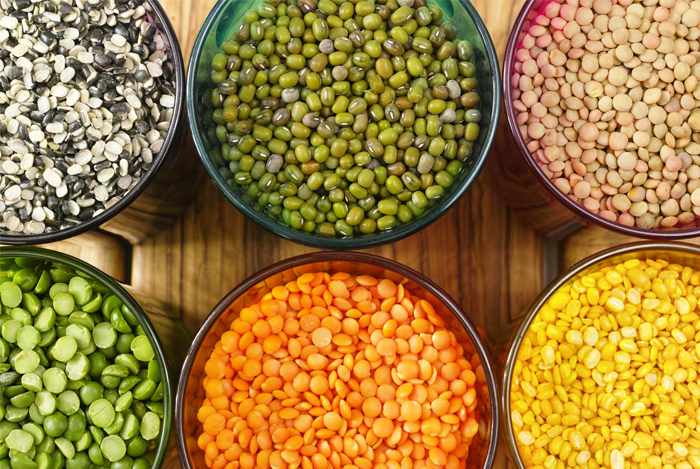
Lentils are one of the best sources of trace minerals you can eat, specifically iron. They’re also easy to digest making them one of the best legumes to eat if you’re not used to eating lots of legumes (beans, peas, or lentils).
Lentils contain 15% of your daily iron needs per ½ cup and they’re a great source of magnesium, protein, potassium, zinc, and some B vitamins. Blend them into a soup, eat them alone, or use them as a base for any dip that you enjoy. Red (split) lentils are the most popular variety and the smallest in size, but they’re also the most nutrient-dense variety. Green, black, and brown lentils are still a good choice, however, if you can’t find the red variety.
9. Cashews
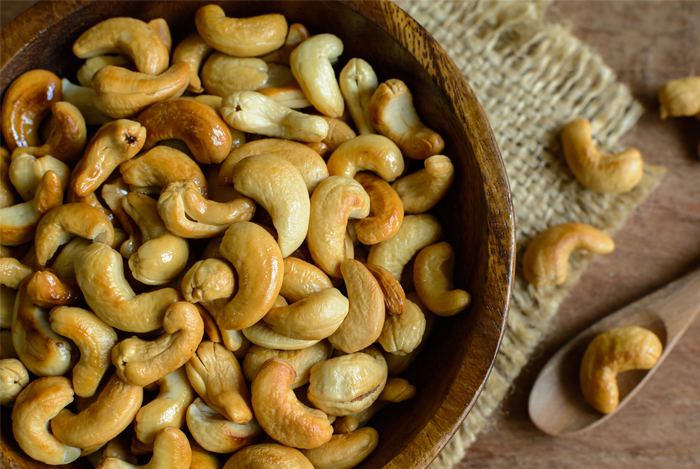
Cashews aren’t just tasty, they’re also loaded with minerals including iron, magnesium, and zinc plus some copper and manganese that you need for optimal thyroid and overall metabolic health. Cashews contain around 11% of your daily iron needs per ¼ cup and they’re also a good source of many B vitamins. Enjoy ¼ cup of raw cashews per day, or feel free to use a couple tablespoons of cashew butter instead.
10. Soy
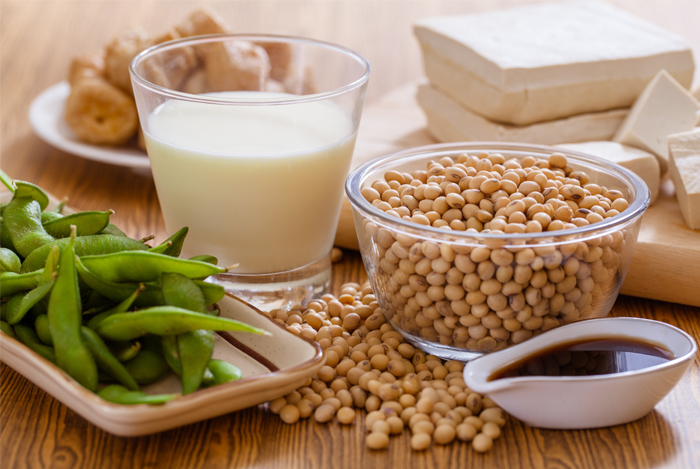
If you’re on the fence about soy, reconsider adding it to your diet in non-GMO forms because it’s packed with lean protein and many minerals, including iron.
Soybeans are naturally high in iron, but so are other forms of soy such as tofu, tempeh (fermented soy), and soy milk. They each contain around 15% of your daily iron needs per serving, and they’re a great source of complete protein.
Other great sources of iron include pumpkin seeds, oysters, barley, some forms of rice, bulgur, and wheat products. When you select food sources of iron, do your best to select non-GMO forms and those produced in an organic fashion whenever possible. Below are some more ways you can increase your iron intake without eating red meat besides adding the foods above to your diet.
5 Tips to Improve Iron Absorption:
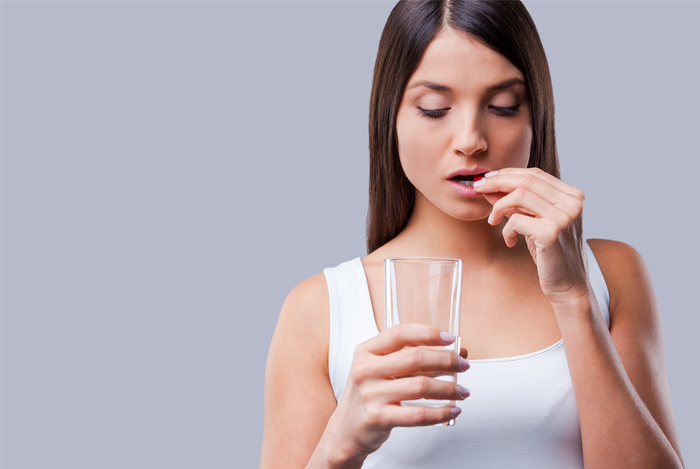
1. Pair Iron-Rich Foods With Vitamin C-Rich Foods
Vitamin C helps the body absorb non-heme (plant) sources of iron more easily. So add some veggies, fruit, or greens to every meal that you eat so that you can absorb more iron from your foods. Each of these aforementioned foods are also great sources of Vitamin C and some of them even contain iron too!
2. Make Iron-Rich Foods a Part of Your Daily Routine
Make the foods above a regular part of your day or choose a handful to include each day for optimal results. A varied diet is always a healthier diet than a diet made up only of a few select foods. Balance is key, so work as many of these iron-rich foods into your day that you can!
3. Consider Eating Iron-Fortified Foods in Moderation
Some fortified cereals, non-dairy milk, and other slightly processed foods can help you fill in the gaps if you’re looking to get your iron from your diet in place of eating red meat or a supplement. Just be careful with which fortified foods you select and don’t rely on them daily for all your iron needs. Choose options without added sugars and hydrogenated oils when you purchase iron-fortified foods and always go for whole grain products whenever you can.
4. Consume Low-Risk Sources of Heme Iron Occasionally From Seafood
Some forms of seafood such as oysters, salmon, halibut, tuna, and mussels are good sources of iron. Be mindful of choosing wild seafood versus farmed to avoid mercury toxicity and PCBs or pesticides.
Making seafood a part of your regular diet is much better than eating meat so long as you are selective about where you purchase it. Seafood can also be high in benefits that improve your metabolism and brain health, so it’s an overall smart choice to add to your diet when looking to eat more nutrient-dense foods.
5. Take a Food-Based Iron Supplement Instead of Synthetic Sources of Iron
Last but not least, if you need more iron than what your diet is giving you and have tried the options above, consider taking a food-based supplement to get your iron needs. Food-based supplements do not come with the risks that iron supplements made from synthetic (heavy metal) sources do and they are much easier for your body to absorb as another bonus. Choose from a non-GMO and organic brand when you purchase food-based supplements to get your iron needs from.
How Much Iron?
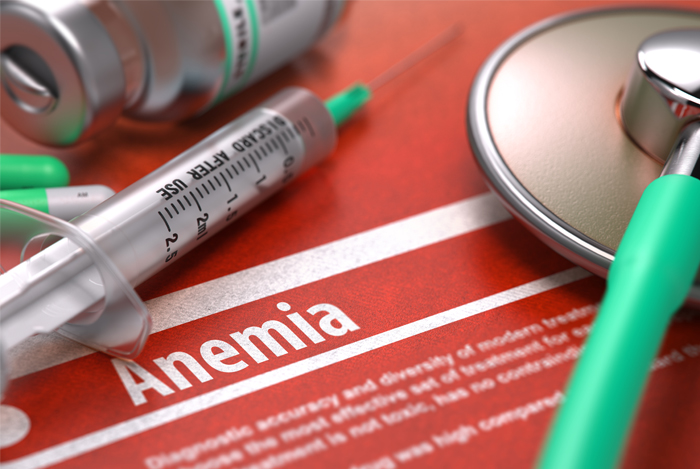
Adult men and women only need 18 milligrams of iron per day, while children only need up to 11 -15 milligrams per day depending on their age.
Women who are pregnant or especially active individuals may need more but should discuss that with their doctors first. Women going through menopause or who have already exited the stages of menopause usually need much less iron.
The easiest way to find out if you’re getting the iron your body needs is to get tested first and then begin adjusting your dietary and supplement needs to reach the levels you need to feel your best. As you can see, you don’t need to eat steak or any form of red meat to get enough iron in your diet, but you do need to be cautious and attentive to your diet and supplement routine.
For more health tips like these, check out these 15 foods that are packed with nutrients that you can benefit from without breaking the bank!
The post How to Get Enough Iron in Your Diet Without Eating Red Meat appeared first on Nutrition Secrets.
http://www.nutritionsecrets.com/how-to-get-enough-iron-in-your-diet-without-eating-red-meat/
No comments:
Post a Comment